#griselda san martin
Text

Haruka Sakaguchi and Griselda San Martin, Typecast Project, 2019
1 note
·
View note
Text
Martín Rodríguez Biography, Age, Wiki, Movies, TV Shows
Martín Rodríguez Biography, Age, Career, Height, Wiki, Family & More, Career, Biography, Ethnicity, Profile, Net Worth, Photos, Videos, TV Shows and More
Actor Martín Rodríguez is primarily recognised for his roles in American films and television shows. He has appeared in numerous well-known films, including Time and the Wind, Zanahoria, Leo’s Room, and many more. For his performance as Leo in the Uruguayan film Leo’s Room (Spanish: El Cuarto De Leo), Martin has been honoured with two prizes from the Uruguayan Film Critics Association for Best Male Actor. Martin made waves in January 2024 when she appeared in the Netflix criminal drama miniseries Griselda as Rivi.
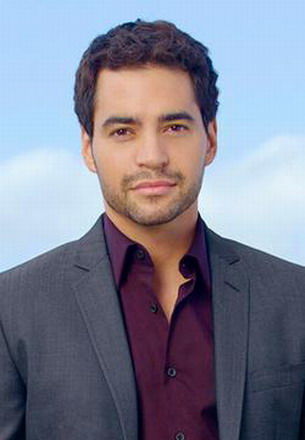
On May 7, 1978, Martín Rodríguez was born in San Juan, Argentina. She completed her education in his hometown.
Martín made his cinematic debut in the 2009 film Leo’s Room (El Cuarto DE Leo), playing the role of Leo. Enrique Buchichio directed the movie. The San Sebastián International Film Festival hosted the film’s world premiere. Martín portrayed Leo, a young man discovering and coming to terms with his sexual orientation. He received several honours for his performance, including Best Actor and Best Male Revelation from the Uruguayan Film Critics Association. He also won Best Actor at the Luna and Ibiza film festivals in Spain.
Martín, in the part of Jorge, in the Enrique Buchichio-directed film “Zanahoria” (2014), which won the Colón DE Oro, the top prize, at the 40th Ibero-American Film Festival in Huelva, Spain.
youtube
Martín Rodríguez Biography
NameMartín RodríguezBirth NameJorge Martín Rodríguez AguirreProfessionActorDate of BirthMay 7, 1978Age45 YearsBirth PlaceSan Juan, ArgentinaHome TownSan Juan, ArgentinaNationalityArgentineFamilyMother: Not Available
Father: Not Available
Sister: Not Available
Brother: Not Available
Wife: Not AvailableHeight5′ 7″ FeetWeight60 KgChest40 inchesWaist32 inches
Read Also
Deance Wyatt Biography, Age, Net Worth, Movies
Victoria Gar Biography, Wiki, Age, Height, Career, Family & More
Coco Lovelock Biography, Wiki, Age, Height, Career, Family & More
Layna Marie Biography, Wiki, Age, Height, Career, Family & More
Rafaela Pugh Biography, Age, Height, Movies, Net Worth
5 notes
·
View notes
Photo

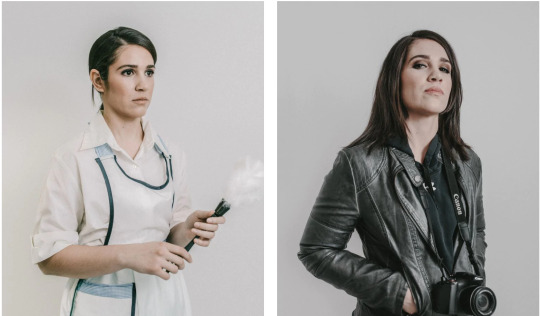

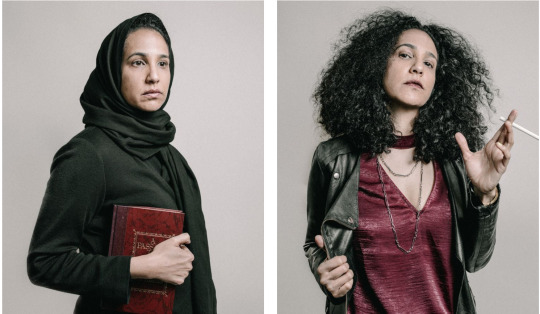


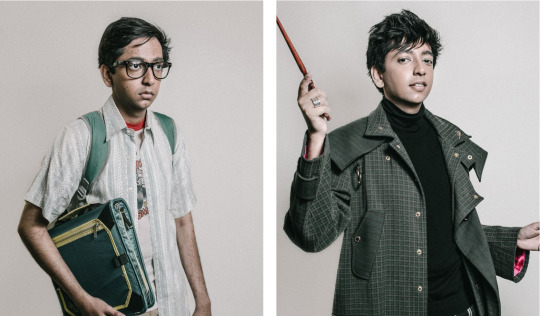
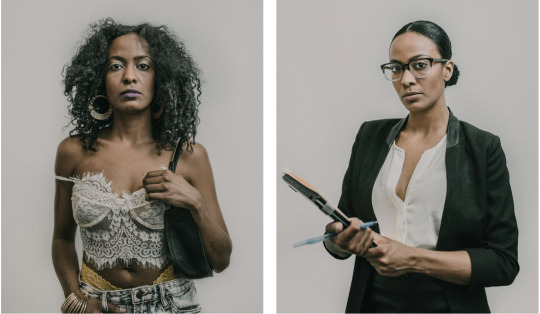
Actors of color often get typecast. Two photographers asked them to depict their dream roles instead.
How Hollywood Sees Me … And How I Want to Be Seen
#dan chen#tasneem nanji#jennifer khoe#antoine t lee#aamira martinez#fady kerko#nik dodani#christine suero#hollywood#representation matters#washington post#haruka sakaguchi#griselda san martin#asian americans#african americans#black americans#arab americans#hispanic americans#latinos#latinas#latinx#chinese american#indian american#egyptian#egyptian americans#south asian#asian british#asian canadians
110K notes
·
View notes
Photo
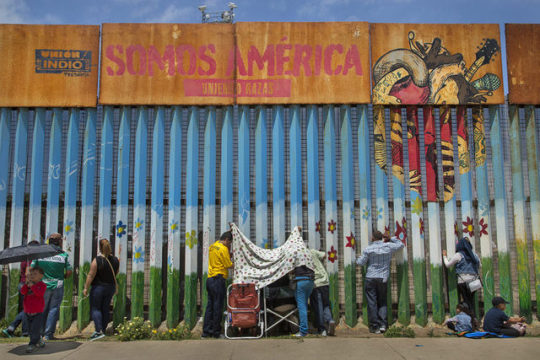
Families separated by immigration laws gather at both sides of the border wall at Friendship Park, the only federally established meeting place along the U.S. - Mexico border. On the U.S. side, the area for visitation is only open a few hours on Saturday and Sunday and the Border Patrol is always vigilant.
© Griselda San Martin
For the past six years Spanish documentary photographer, Griselda San Martin, has documented the border between the U.S. and Mexico. Based in New York, San Martin focuses on issues of immigration, deportation, inequality and human rights abuses from the perspective of identity and belonging. This year her series, which is called “The Wall,” received the 2018 FENCE Jury Choice Award, for which San Martin was given a $5,000 grant plus an exhibition at the upcoming Photoville festival.
At the juncture of San Diego, California, and Tijuana, Mexico, the border wall extends 300 feet into the Pacific Ocean, “casting a long and conflicting shadow,” writes San Martin in the artist statement for “The Wall.” Photographed at Friendship Park, a stretch of the border where families meet to share intimate moments through a metal fence, San Martin attempts to “neutralize” the separation the wall was built to create by calling attention to the human interactions at the park.
The border fence has become an “enduring, permanent feature of the geopolitical landscape–and a powerful, aggressive reminder to immigrants that they don’t belong,” writes San Martin. Her goal with “The Wall” is to “transform the discourse on border security into a conversation about immigrant visibility, addressing audiences on both sides of the wall by challenging popular assumptions or by reminding them that they are seen, heard and that they matter.”
More photos
12 notes
·
View notes
Audio
Taking the Long View—Social Documentary Projects on Latest B&H Podcast
Our first guest is Griselda San Martin, a Spanish photographer who has been telling stories of immigration, deportation, and the often-blurred lines of national identity. One of her series profiles Las Delfinas, a girl’s flag-football team from a high school, in Tijuana, Mexico. Her project on families who meet on both sides of the U.S.–Mexico border wall for weekly reunions centers on a deported man who sings through the wall to his daughter on the other side, and her current four-year project profiles U.S. veterans being deported as a consequence of criminal convictions.
After a break, we speak with Salwan Georges, a staff photographer for the Detroit Free Press who, in addition to his daily assignments, is documenting the immigrant communities of Dearborn and Detroit, Michigan. This is a subject close to his heart—Georges came to the United States as a refugee, in 2004.
The #Podcast is available now on #iTunes, #Stitcher, #SoundCloud and through RSS!
#podcast#photography#social#documentary#bhphoto#bhphotopodcast#social documentary projects#griselda san martin#mexico#salwan georges#photo tips#interview
1 note
·
View note
Link
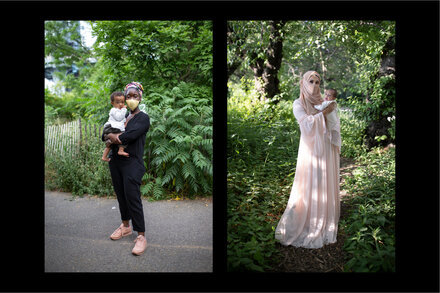
By PHOTO ESSAY BY GRISELDA SAN MARTIN from Parenting in the New York Times-https://www.nytimes.com/interactive/2021/05/07/parenting/mothers-day-photos.html?partner=IFTTT
Portraits of new mothers across New York City.
A Photographer Captures ‘Generation Covid’ New York Times
0 notes
Text
It’s Mother’s Day. I hope the moms in our fandom have a good one, surrounded by their loved ones if possible.
I know that this day can be hard. For those of you who dread the holiday, for whatever reason, I think that the words of Anne Lamott will resonate with you. I send you all a big hug.
The new mothers should also take a look at this photo essay. When the pandemic hit last March, Griselda San Martin, with a new baby, turned to other mothers for comfort. She captured them across New York City and asked them to write letters to their children. “I haven’t lost myself in the midst of all the chaos in the world because of you,” one wrote. It is moving.
7 notes
·
View notes
Photo

DOCUMENTING IMMIGRATION UNDER THE TRUMP REGIME
Miss Rosen for Blind
When Donald Trump announced his bid for the presidency of the United States on June 15, 2016, he let the world know where he stood, using racist, xenophobic rhetoric to foment anti-immigration sentiment from his white national base. “When Mexico sends its people, they’re not sending their best,” Trump claimed. “They’re sending people that have lots of problems, and they’re bringing those problems with us. They’re bringing drugs. They’re bringing crime. They’re rapists.”
Though Trump himself has been accused of sexual misconduct by at least 23 women since the 1980s, his scare tactics worked. Since elected, he has waged a campaign against immigrants from the Global South on both sides of the border. In just three years, the policies Trump Administration have destroyed families, uprooted countless lives, and left people to suffer and perish in facilities that deny them rights granted under the Geneva Conventions.
In the barrage of daily headlines, it’s easy to lose track and forget the scale and scope of these abuses of power. The new exhibition Trump Revolution: Immigration, the first of a year-long six-part series exploring the impact of the 45th presidency, takes on the task of making sense of this relentless assault. Here, curators Cynthia Rivera and Michael Kamber bring together the work of eight photographers and filmmakers including Greg Constantine, Kholood Eid, Luis Antonio Rojas, Elliot Ross, Griselda San Martin, John Moore, Cinthya Santos-Briones, and Laura Saunders, examining the complexities of the problem while showing the true human cost.
Read the Full Story at Blind
Photo: Tijuana. 2019. Park on the USA-Mexico border. From the project "La Jungla" © Lua Ribeira / Magnum Photos
1 note
·
View note
Photo
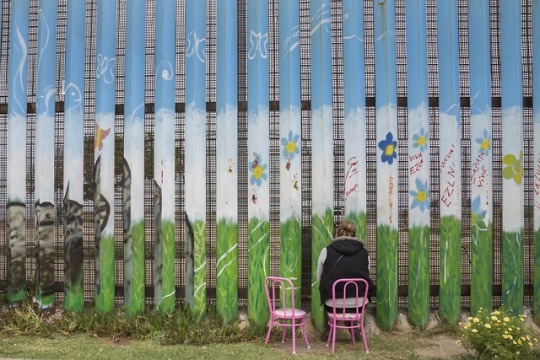
Griselda San Martin, selection from The Wall, 2016
10 notes
·
View notes
Text
Las argentinas que estuvieron en el maratón olímpico y todas las medallistas

El maratón femenino se disputa en los Juegos Olímpicos desde 1984 (Los Angeles) y ahora Marcela Cristina Gómez se convertirá en la sexta argentina en participar en esta prueba.
La primera del historial fue Griselda González, quien logró el 19° puesto en Atlanta (1996) con 2h.35m.12s. Griselda, representante de Los Ñandúes y que tenía la conducción técnica del profesor Manuel Rivera, ya había participado sobre 10 mil metros llanos en los Juegos de Barcelona (1992) y ostentaba el récord nacional de maratón, que luego llevó hasta 2h.31m44s. en Turín (1995). Este récord tuvo una larga vigencia, hasta que Marcela pudo mejorarlo el año pasado en Sevilla. Griselda, por su parte, volvió a competir en los Juegos pero ya representando a España, país en el que se había radicado a principios de la década del 90.
La segunda argentina en llegar al maratón olímpico fue la cordobesa Sandra Edith Torres Alvarez, quien compitió en Atenas (2004) y ocupó el 55° puesto con 2h.54m48s. Había logrado su clasificación pocos meses antes al ganar el maratón a Pampa Traviesa en Santa Rosa con 2h40m23s. La mejor marca de su campaña fue 2h.39m02s., a fines del 2005 en San Sebastián.
María de los Angeles Peralta –hoy presidenta de la Federación Bonaerense- integró el ciclo de los excelentes mediofondistas y fondistas de la “cantera” marplatense que llegaron hasta la cita olímpica. Lo hizo en los Juegos Olímpicos de Londres, donde ocupó el 82° puesto del maratón con 2h.40m.50s. Cuatro meses antes había logrado su mejor marca y su clasificación con 2h.37m.57s en Rotterdam.
Peralta volvió a clasificar para los Juegos de Rio de Janeiro (2016), donde estuvo acompañada por otras dos maratonistas argentinas: la cordobesa Rosa Liliana Godoy y la sanjuanina Viviana Chávez. Estas también habían conseguido sus marcas personas e índices olímpicos en el maratón de Rotterdam (2h38m36s y 2h38m27s respectivamente). En los Juegos de Rio, disputados al igual que los anteriores bajo difíciles condiciones climáticas, Godoy terminó 110ª. con 2h52m32s, Chávez quedó 125ª. con 3h03m23s y Peralta abandonó.
EL HISTORIAL DEL MARATON OLIMPICO FEMENINO
A comienzos de la década del 80, las carreras de maratón experimentaron un “boom” a nivel mundial, un fenómeno que se extiende hasta nuestros días, con la incorporación masiva a una distancia que – hasta entonces- quedaba reducida a sólo grupos de audaces. Y parte esencial de ese movimiento fue el entusiasmo que despertó entre las mujeres que, hasta poco tiempo antes, sólo tenían como máxima distancia olímpica los 1.500 metros llanos en pista. El maratón de Nueva York, con su director, el mítico Fred Lebow, fue un símbolo de ese movimiento.
Los Juegos Olímpicos se integraron al fenómeno e incorporaron el maratón femenino a su programación a partir de los Juegos de Los Angeles, en 1984. Y allí se dieron cita las más notables corredores de la época. Joan Benoit, una estadounidense que había fijado un récord mundial de 2h.22m.43s. en 1983, realizó una excepcional carrera en el circuito angelino, liderando de punta a punta y convirtiéndose así en la primera campeona olímpica de la historia, superando a otras ex recordistas de su época como las noruegas Grete Waitz (nueve veces ganadora del NYC Marathon) e Ingrid Kristiansen, y la siempre rendidora portuguesa Rosa Mota, quien tuvo su mayor premio cuatro años más tarde en Seúl.
En sintonía con el gran dominio de los atletas africanos en las carreras de fondo durante las últimas décadas, Etiopía y Kenya ya están entre los ganadores del maratón femenino. Las etíopes lo hicieron dos veces, la última con Tiki Gelana en Londres (2012) fijando el récord olímpico vigente de 2h23m07s. Kenya logró su primer triunfo en Rio (2016) con Memima Jelagat Sumgong. Esta ya figuraba entre las mejores corredoras de aquel momento con una marca personal de 2h20m48s (Chicago 2013) y triunfos en Londres y Rotterdam, además de segundos puestos en “majors” como Boston, Chicago y Nueva York.
Este es el historial de las medallistas olímpicas en maratón
Los Angeles, 5 de agosto de 1984
1 Joan Benoit USA 2h.24m.52s.
2 Grete Waitz Noruega 2h.26m.18s.
3 Rosa Mota Portugal 2h.26m.57s.
Seúl, 23 de septiembre de 1988
1 Rosa Mota Portugal 2h.25m.40s.
2 Lisa Martin Australia 2h.25m.53s
3 Katrin Dörre Alem. Oriental 2h.26m.21s.
Barcelona, 1 de agosto de 1992
1 Valentina Yegorova EUN 2h.32m.41s
2 Yuko Akimori Japón 2h.32m.49s
3 Lorraine Moller N. Zelanda 2h.33m.59s.
Atlanta, 28 de julio de 1996
1 Fatuma Roba Etiopía 2h.26m.05s
2 Valentina Yegorova Rusia 2h.28m.05s.
3 Yuko Akimori Japón 2h.28m.39s.
Sydney, 24 de septiembre de 2000
1 Naoko Takahashi Japón 2h.23m.14s
2 Lidia Simon Rumania 2h.23m.22s.
3 Joyce Chepchumba Kenya 2h.24m.45s.
Atenas, 22 de agosto de 2004
1 Muzuki Noguchi Japón 2h.26m.20s
2 Catherine Ndereba Kenya 2h.26m.32s.
3 Deena Kastor USA 2h.27m.20s.
Beijing, 15 de agosto de 2008
1 Constantina Tomescu Rumania 2h.26m.44s.
2 Catherine Ndereba Kenya 2h.27m.06s
3 Zou Chunxiu China 2h.27m.07s.
Londres, 5 de agosto de 2012
1 Tiki Gelana Etiopía 2h.23m.07s.
2 Priscah Jeptoo Kenya 2h.23m.12s.
3 Tatyana Arkhipova Rusia 2h.23m.29s.
Río de Janeiro, 14 de agosto de 2016
1 Jemima Jelagat-Sumgong Kenya 2h.24m.04s.
2 Eunice Jepkirui Kirwa Bahrein 2h.24m.13s
3 Mare Dibaba Etiopía 2h.24m.30s.
Read the full article
0 notes
Text
PORNOPTICON
BIBLIOGRAPHY
Agrest, Diana, “Architecture from Without: Body, Logic, and Sex,” Assemblage 7 (October 1988), pp. 28-41.
Agrest, Diana, Patricia Conway, and Leslie Kanes Weisman (eds.), The Sex of Architecture (New York: Abrams, 1997).
Bajac, Quentin and Didier Ottinger (eds.), Dreamlands. Des parcs d’attractions aux cités du future (Paris: Centre Pompidou, 2010).
Bancel, Nicolas et al., Zoos humains. De la Vénus Hottentote aux reality shows (Paris: La Découverte, 2002).
Banham, Reyner, Age of Masters: A Personal View of Modern Architecture (New York: Harper and Row, 1966).
Baudrillard, Jen, “Disneyworld Company,” Libération, March 4, 1996.
—, Utopia Deferred, Writing for Utopie, 1967-1978 (New York: Semiotext(e), 2006).
Bentham, Jeremy, Panopticon Writings (New York: Verso, 1995).
Birkin, Lawrence, Consuming Desire: Sexual Science and the Emergence of a Culture of Abundance, 1817-1914 (Ithaca, NY: Cornell University Press, 1988).
Bruno, Giuliana, “Bodily Architectures,” Assemblage 19 (December 1992), p.106.
—, “Site-seeing: Architecture and the Moving Image,” Wide Angle 19.4 (1997), pp. 8-24.
Bueno, María José, “Le panopticon érotique de Ledoux,” Dix-huitième siècle 22 (1990), pp. 413-21.
Butler, Judith, Bodies That Matter: On the Discursive Limits of Sex (New York: Routledge, 1993).
—, Excitable Speech: The Politics of the Performative (New York: Routledge, 1997).
—, Giving an Account of Oneself (New York: Fordham University Press, 2005).
—, the Psychic Life of Power: Theories on Subjection (Stanford, CA: Stanford University Press, 1997).
Califia, Pat, Public Sex: The Culture of Radical Sex (Pittsburgh: Cleis Press, 1994).
Case, Sue Ellen, Feminism and Theater (London: Macmillan, 1998).
Cass, Jeffrey, “Egypt on Steroids: Luxor Las Vegas and Postmodern Orientalism,” in Medina Lasanky and Brian McLaren (eds.), Architecture and Tourism: Perceptions, Performance and Place (Oxford: Berg, 2004).
Chapman, Michel, “Architecture and Hermaphroditism: Gender Ambiguity and the Forbidden Antecedents of Architectural Form,” Queer Space: Centers and Peripheries, Conference Proceedings, Sydney (2007), pp. 1-7.
Colomina, Beatriz, “Architectureproduction,” in Kester Rattenbury (ed.), This is Not Architecture: Media Constructions (New York: Routledge, 2002), pp. 207-21.
—, “Media as Modern Architecture,” in Anthony Vidler (ed.), Architecture: Between Spectacle and Use (New Haven: The Clark Institute/Yale University Press, 2008).
—, “The Media House,” Assemblage 27 (August, 1995), pp. 55-56.
—, Privacy and Publicity: Architecture as Mass Media (Cambridge, MA: The MIT Press, 1996).
Colomina, Beatriz (ed.), Sexuality and Space (New York: Princeton Architectural Press, 1992).
Debord, Guy, The Society of Spectacle, trans. Donald Nicholson-Smith (New York: Zone Books, 1995).
DeJean, Joan, The Reinvention of Obscenity (Chicago: University of Chicago Press, 2002).
Deleuze, Gilles and Félix Guattari, Mille plateau. Capitalisme et schizophrénie 2 (Paris: Minuit, 1980).
—, A Thousand Plateaus: Capitalism and Schizophrenia II (London: Continuum, 1987).
Derrida, Jacques, Monolingualism of the Other, Or the Prosthesis of Origin, trans. Patric Mensah (Stanford, CA: Stanford University Press), 1998).
de Sade, Marquis, “Projet de création de lieux de prostitution, organisés, entretenus et dirigés par l’État,” in Joseph F. Michaud, Biographie Universelle (Graz: Akademische Druck-U. Verlagsanstal, 1968).
Downey, Georgina and Mark Taylor, “Curtains and Carnality: Processual Seductions in Eighteenth Century Text and Space,” in Imagining: Proceedings of the 27th International Sahanz Conference, 30 June-2 July 2010 (New-castle, New South Wales).
Eisenstein, Sergei M., “Montage and Architecture,” Assemblage 10 (1989), pp. 110-31.
Fludernik, Monika, “Carceral Topography: Spatiality, Liminality and Corporality in the Literary Prison,” Textual Practice 13.1 (1999), pp. 43-47.
Foucault, Michel, Abnormal: Lectures at the Collège de France, 1974-75 (New York: Picador, 2003).
—, The Archeology of Knowledge (New York: Pantheon Books, 1972).
—, “Des espaces autres,” Revue d’Archittetura cronache e storia 13.150 (1968), pp. 822-23.
—, “Des espaces autres,” Revue d’Architecture (October 1984), pp. 46-49.
—, Discipline and Punish: The Birth of the Prison, trans. A. Sheridan (New York: Vintage, 1979).
—, Dits et écrits (Paris: Gallimard, 1994).
—, Essential Works, ed. Paul Rabinow and James D. Faubion (London: Penguin, 2001).
—, Foucault: Ethics, Subjectivity, Truth, ed. Paul Rabinow, trans. Robert Hurley et al. (New York: New Press, 1997).
—, Histoire de la Sexualité, 1. La volonté de savoir (Paris: Gallimard, 1976).
—, The History of Sexuality (New York: Vintage, 1990).
—, Il faut défendre la société, Cours au Collège de France, 1976 (Paris: Seuil, 1997).
—, L’archéologie du savoir (Paris: Gallimard, 1969).
—, Le pourvoir psychiatrique, Cours au Collège de France 1973-74 (Paris: Seuil, 2003).
—, “Les hétérotopies,” in Le corps utopique. Les hétérotopies (Paris: Lignes, 2009), pp. 28-29.
—, Les mots et les choses (Paris: Gallimard, 1966).
—, Naissance de la biopolitique, Cours au Collège de France 1978-79 (Paris: Seuil, 2004).
—, Naissance de la clinique (Paris: PUF, 1963).
—, The Order of Things (New York: Routledge, 2001).
—, Power/Knowledge: Selected Interviews and Other Writings, 1972-1977, ed. Colin Gordon (New York: Pantheon Books, 1980).
—, Technologies of the Self: A Seminar with Michel Foucault, ed. L.H. Martin, H. Gutman, and P.H. Hutton (London: Tavistock, 1988).
—, Les machines à guérir. Aux origines de l’hôpital moderne, 2d ed. (Brussels: Mardaga, 1977).
Foucault, Michel and Jeremy Bentham, Le panoptique, précédé de L’œil du pouvoir, entretien avec Michel Foucault (Paris: Belfond, 1977).
Haraway, Donna, Simians, Cyborgs and Women: The Reinvention of Nature, (New York: Routledge, 1991).
Hayles, N. Katherine, How We Became Posthuman: Virtual Bodies in Cybernetics, Literature, and Informatics (Chicago: University of Chicago Press, 1999).
Ingraham, Catherine, “Utopia/Heterotopia,” course description, Columbia University, 1989.
Koolhaas, Rem, Delirious New York: A Retroactive Manifesto for Manhattan, 2d ed. (New York: Monacelli Press, 1994).
Lebensztejn, Jean-Claude, Solitary Sex: A Cultural History of Masturbation (Cambridge MA: The MIT Press, 2003).
Le Brun, Annie, Les châteaux de la subversion, suivi de Soudain un bloc d’abîme, Sade (Paris: Gallimard, 2010).
Lyon, David, Theorizing Surveillance: The Panopticon and Beyond (London: Willan Publishing, 2006).
Manovich, Lev, “The Poetics of Augmented Space,” Visual Communication 5.2 (2006), pp. 219-40.
Marin, Louis, Utopies: Jeux d’espaces (Paris: Éditions de Minuit, 1973).
Martin, Reinhold, The Organizational Complex: Architecture, Media, and Corporate Space (Cambridge MA: The MIT Press, 2005).
McLeod, Mary, “Other Spaces and Others,” in Diana Agrest, Patricia Conway, and Leslie Kanes Weisman (eds.), The Sex of Architecture (New York: Abrams, 19960, pp. 15-28.
McLuhan, Marshall, Understanding Media: The Extensions of Man (New York, Signet, 1964).
Mulvey, Laura, “Visual Pleasure and Narrative Cinema,” Screen 16.3 (Winter 1975), pp. 6-18.
Otero-Pailos, Jorge, Architecture’s Historical Turn: Phenomenology and the Rise of the Postmodern (Minneapolis: University of Minnesota Press, 2010).
Pollock, Griselda, Encounters in the Virtual Feminist Museum: Time, Space and the Archive (New York: Routledge, 2007),
Preciado, Beatriz-Paul, Pornotopia: An Essay on Playboy’s Architecture and Biopolitics (New York: Zone Books, 2014).
Rheingold, Howard, “Teledildonics: Reach Out and Touch Someone,” Mondo 2000 (Summer 1990), pp. 52-54.
Singley, Paulette, “The Anamorphic Phallus within Ledoux’s Dismembered Plan of Chaux,” Journal of Architectural Education 46.3 (February 1993), pp. 176-88.
Sprinkle, Annie, Post-Porn Modernist: My 25 Years as a Multimedia Whore (San Francisco: Cleis Press, 1998).
Stone, Allucere Rosanne, The War of Desire and Technology at the Close of the Mechanical Age (Cambridge, MA: The MIT Press, 1996).
Strange, Carolyn and Alison Bashford, Isolation: Places and Practices of Exclusion (New York: Routledge, 2003).
Triclot, Mathieu, Philosophie des jeux video (Paris: Zones, 2011).
Venturi, Robert, Denise Scott Brown, and Steven Izenour, Learning from Las Vegas, 2d ed. (Cambridge MA: The MIT Press, 1977).
Vidler, Anthony, The Architectural Uncanny: Essays in the Modern Unhomely (Cambridge, MA: The MIT Press, 1992).
—, Claude Nicolas Ledoux, Architecture and Utopia in the Era of the French Revolution (Basel: Birkäuser, 2005).
—, The Writing on the Walls: Architectural Theory in the Late Enlightenment (New York: Princeton Architectural Press, 1987).
Vigarello, Georges, Histoire du viol, XVIe-XXe siècles (Paris: Seuil, 1998).
Vigarello, Georges (ed.), Histoire du corps (Paris: Seuil, 2005).
Virilio, Paul, “Improbable Architecture,” Semiotexte (1991), pp. 69-100.
—, “The Overexposed City,” in Neil Leach (ed.), Rethinking Architecture: A Reader in Cultural Theory (London: Routledge, 1997), pp. 381-90.
Virilio, Paul, and Sylvère Lotringer, “After Architecture: A Conversation,” Grey Room 3 (Spring 2001), pp. 32-53.
Wallenstein, Sven-Olov, Biopolitics and the Emergence of Modern Architecture (New York: Columbia University Press, 2009).
Wigley, Mark, “The Architectural Brain,” in Anthony Burke and Therese Tierney (eds.), Network Practices: New Strategies in Architecture and Design (New York: Princeton Architectural Press, 2007), pp. 30-53.
—, “Prosthetic Theory: The Disciplining of Architecture,” Assemblage 15 (August 1991), pp. 6-29.
—, “Towards a History of Quantity,” in Anthony Vidler (ed.), Architecture: Between Spectacle and Use (Williamstown, MA: Clark Art Institute, 2008).
—, “Untitled: The Housing of Gender,” in Beatriz Colomina (ed.), Sexuality and Space (New York: Princeton Architectural Press, 1992), pp. 327-89.
Williams, Linda, Hard Core: Power, Pleasure, and the Frenzy of the Visible (Berkeley: University of California Press, 1989).
Williams, Linda (ed.), Porn Studies (Durham, NC: Duke University Press, 2004).
Zahn, Johanes, Oculus artificialis Teledioptricus, in Hans-Dieter Lohneis, Die deutschen Spiegelkabinette (Munich: Tuduv, 1985).
41 notes
·
View notes
Photo

📷 #ArtIsAWeapon #ExhibitOpening Tonight at the @bronxdocumentarycenter (repost) - Join us from 6-9pm for the opening reception of "Trump Revolution: Immigration", a group show that documents the current president's overturning of decades of American @johnbmoore #immigration policy and law, and its profound effects on American society and the lives of millions of immigrants. Featuring work by Greg Constantine, Kholood Eid, John Moore, Luis Antonio Rojas, Elliot Ross, Griselda San Martin, Cinthya Santos-Briones, and Laura Saunders. Curated by @michaelkamber & @cynthiarivera_photo. In addition @magnumphotos' “LINEA: The Border Project" will be on view featuring work by Antoine D'Agata, Olivia Arthur, Matt Black, Carolyn Drake in collaboration with Andres Andres Gonzalez, Thomas Dworzak, Jim Goldberg, David Alan Harvey, Cristina De Middel, Radal Milach, Mark Power, Lua Ribeira, Alessandra Sanguinetti, Jerome Sessini, Larry Towell, and Peter Van Agtmael. Curated by Magnum Photos. ________________________ Photo: A two-year-old Honduran asylum seeker cries as her mother is searched and detained near the U.S.-Mexico border on June 12, 2018 in McAllen, Texas. Una solicitante de asilo hondureña de dos años llora mientras su madre es registrada y detenida cerca de la frontera entre Estados Unidos y México. © John Moore @jbmoorephoto /Getty Images _________________________ #trumprevolution #immigrationpolicy #gettyimages #gettyimagesnews #photography #photojournalism #thebronx #exhibition #PhotoExhibit #TraScapades #ArtIsAWeapon #BlackGirlArtGeeks🤓 https://www.instagram.com/p/B8mGqK1g5J_/?igshid=g7kcvvlcdm3y
#artisaweapon#exhibitopening#immigration#trumprevolution#immigrationpolicy#gettyimages#gettyimagesnews#photography#photojournalism#thebronx#exhibition#photoexhibit#trascapades#blackgirlartgeeks🤓
0 notes
Photo

“The Warmth of Other Suns: Stories of Global Displacement,” a new exhibition at @phillipscollection, features 75 international artists whose work poses urgent questions around migration and the global refugee crisis. The show includes pictures by the likes of Lewis Hine, Griselda San Martin, Dorothea Lange, John Moore, Jack Delano and Wolfgang Tillmans. Hit the link in our bio to see more. [Photo: Still from Adrian Paci’s film “Centro di permanenza temporanea (Temporary Detention Center)” 2007. Courtesy of @ adrian_paci and @ kaufmannrepetto, Milan/New York] http://bit.ly/2WZiQOk
0 notes
Text
PREMOS ACE ... LISTA DE NOMINADOS - #Noticias #PREMIOS-ACE #Showsargentinos #Teatro
Publicado en http://showsargentinos.com/premos-ace-lista-de-nominados/
PREMOS ACE ... LISTA DE NOMINADOS
Uno de los premios más importantes del teatro local, los ACE, anunció a sus candidatos para llevarse la estatuilla a lo mejor de la producción 2016/21017. La Asociación de Cronistas del Espectáculo (ACE) premia a las obras que estuvieron en cartel entre el 1 de junio de 2016 al 31 de mayo de 2017. Estos son los candidatos a los premios ACE a lo mejor de la producción teatral y sus protagonistas en todos los rubros: Obra argentina La Restauración de Andrea Stefanoni y Juan Martin Cervetto (El Extranjero / Timbre 4) La Terquedad de Rafael Spregelburd (TNC) Tarascones de Gonzalo Demaría (TNC) Todas las Rayuelas de Carlos La Casa (Multiteatro) Un Hombre Equivocado de Roberto Cossa, versión libre del guión de la película”El arreglo” escrito por Carlos Somigliana y Roberto Cossa (TNC) Vacas sagradas de Daniel Dalmaroni (CCC) Drama y o comedia dramática Doble o Nada de Sabina Berman versión sobre su original “Testosterona” (La Comedia) Doña Rosita la Soltera de Federico Garcia Lorca, adaptación de Graciela Dufau y Hugo Urquijo(Regio) I.D.I.O.T.A de Jordi Casanovas (Picadero) La herencia de Eszter de Sándor Márai (La Comedia) Las Noches Blancas de Ariel Gurevich variación sobre la novela de Fiódor Dostoievski (CuluralSan Martin / El extranjero) Relojero de Armando Discépolo (Regio) Actriz protagónica drama y/o comedia dramática Alejandra Darín por Un hombre equivocado María José Gabin por I.D.I.O.T.A. Mirta Busnelli por La Savia Paula Cancio por Doble o Nada Pilar Gamboa por La terquedad Thelma Biral La Herencia de Eszter Actor protagónico en drama y/o comedia dramática Alejandro Awada por Un hombre equivocado Hugo Arana por Todas las rayuelas Luis Machín por I.D.I.O.T.A. Miguel Angel Solá por Doble o Nada Nelson Rueda por Las Noches Blancas Osmar Núñez por Relojero Director drama y/o comedia dramática Analía Fedra García por Relojero Andrés Bazzalo por Todas las rayuelas Daniel Veronese por I.D.I.O.T.A, Hugo Urquijo por Doña Rosita la Soltera Rafael Spregelburd por La Terquedad Villanueva Cosse por Un hombre equivocado Comedia Falladas de José María Muscari (Multiteatro) La Puerta de al Lado de Fabrice Roger–Lacan,versión de Federico González Del Pino, Fernando Masllorens (La Plaza) Los vecinos de arriba de Cesc Gay, versión de Javier Daulte (Metropolitan) Todas las Canciones de Amor de Santiago Loza (La Plaza) Un rato con él de Julio Chavez y Camila Mansilla (El Nacional) Actriz protagónica en comedia Alejandra Flechner por Tarascones Florencia Peña por Los vecinos de arriba Graciela Dufau por No me pienso morir Jorgelina Aruzzi por La puerta de al lado Marilú Marini por Todas las canciones de amor Paola Barrientos por Tarascones Actor protagónico en comedia Adrián Suar por Un rato con él Carlos Portaluppi por Invencible Diego Peretti por Los vecinos de arriba Julio Chavez por Un rato con el Osmar Núñez por Orquesta de señoritas Peto Menahem por La puerta de al lado Actriz y actor reparto drama, comedia dramática y/o comedia Edgardo Moreira La herencia de Eszter Horacio Roca por Relojero Julieta Vallina por Los vecinos de arriba Laura Grandinetti por Relojero Rafael Ferro por Los vecinos de arriba Rita Cortese por Doña Rosita la Soltera Director comedia Alejandro Tantanian por Todas las canciones de amor Ciro Zorzoli por Tarascones Claudio Tolcachir por Ay amor divino Daniel Barone por Un rato con él Javier Daulte por Los vecinos de arriba Actuación femenina en obra para un solo personaje Jimena Anganuzzi por Frida Kahlo luces y sombras de Patricio Abadi (CCC) Lorena Vega por Yo, Encarnación Ezcurra de Cristina Escofet (Del Pueblo) Mercedes Morán por Ay amor divino de Mercedes Morán (Maipo) María Milessi por Biolenta- delicado emparche femenino de Carolina Vergara Olivetti (El Extranjero) Mónica Villa por Isabel de Guevara.La carta silenciada de Alicia Muñoz (Del Pueblo) Actuacion masculina en obra para un solo personaje Juan Leyrado por El elogio de la risa de Gastón Marioni (Multiteatro) Luis Machín por El mar de noche de Santiago Loza (Apacheta) Norberto Gonzalo por El pescado sin vender… de Norberto Gonzalo (La Máscara) Rodrigo Cárdenas por Todo eso fuiste de Rodrigo Cárdenas (La Comedia) Musical / music hall y/o café concert Asesinato para dos de Joe Kinosian y Keller Blair (El Cultural San Martin) Cinelandia de Alfredo Arias, René de Ceccaty (La Ribera) Jeckyll y Hyde de Leslie Bricusse y Frank Wildhorn (Metropolitan) Lo prohibido de Betty Gambartes y Diego Vila (La Plaza) Sugar de Peter Stone, versión Mario Morgan, Fernando Masllorens, y Federico González del Pino (Lola Membrives) Actuación femenina en musical / music hall y/o café concert Alejandra Radano por Lo Prohibido Belen Pasqualini por Christiane Griselda Siciliani por Sugar Melania Lenoir por Jekyll y Hyde Natalia Cociuffo por Mujeres perfectas Actuación masculina en musical / music hall y/o café concert Carlos Casella por Cinelandia Federico D’ Elia por Sugar Juan Darthes por Lo prohibido Juan Rodo por Jekyll y Hyde Nicolas Cabré por Sugar Dirección general de musical / music hall y/o café concert Alfredo Arias por Cinelandia Arturo Puig por Sugar Betty Gambartes por Lo prohibido Gonzalo Castagnino por Asesinato para dos Sergio Lombardo por Jekyll y Hyde Dirección musical Alberto Favero por Doña Rosita La Soltera Damian Mahler por Jekyll y Hyde Diego Vila por Lo prohibido Gabriel Goldman por Asesinato para dos Gerardo Gardelin por Sugar Martín Bianchedi por Mujeres perfectas Espectaculo teatro alternativo Espumas de Oriente de Irene Almus (Num) La discreta enamorada de Lope de Vega (CCC) La Tempestad, versión de Alfredo Martín de la obra de William Shakespeare (Andamio 90) Los días más felices de Rodrigo Cárdenas (Korinthio) Me amarás por siempre jamás, adaptación de Weldedde Eugene O’Neill (El método Kairos Tebas Land de Sergio Blanco (Timbre 4) Actriz teatro alternativo Ana Yovino por La discreta enamorada Andrea Bonelli por Juegos de Amor y de Guerra Marcela Ferradas por El Padre Paula Morales por Me amarás por siempre jamás Rita Terranova por En boca cerrada Silvia Perez por La Restauracion Actor teatro alternativo Alfredo Castellani por Vacas sagradas Edgardo Moreira por El padre Gabriel Virtuoso por Espumas de Oriente Gerardo Otero por Tebas Land Lautaro Perotti por Tebas Land Marcelo Bucossi por La tempestad Director teatro alternativo Andrés Bazzalo por Yo, Encarnación Ezcurra Corina Fiorillo por Tebas Land Hugo Urquijo por Vacas sagradas Jorge Azurmendi por En boca cerrada Santiago Doria por La discreta enamorada Oscar Barney Finn por Juegos de Amor y de Guerra Coreografía Ariel Juin por Brochero Diego Bros por Lo prohibido Gustavo Wons por Sugar Ruben Cuello por Mujeres perfectas Mariano Botindari por Jekyll y Hyde Escenografía Alberto Negrin por Sugar Eugenio Zanetti por Doña Rosita la Soltera Héctor Calmet por La tempestad Jorge Ferrari por Un rato con él Santiago Badillo por La terquedad Sebastian Sabas por Vacas Sagradas Iluminación Eli Sirlin por Doña Rosita la soltera Leandra Rodríguez por Un hombre equivocado Marcelo Cuervo por I.D.I.O.T.A. Mariano Demaria por Sugar Santiago Badillo por La terquedad Música original Alberto Favero por Doña Rosita la Soltera Damian Laplace por Todas las rayuelas Gaby Goldman por La Discreta Enamorada Marcelo Katz por Tarascones Mariano Cossa para Un hombre equivocado Sebastian Guevara, Agustín Flores Muñoz y Malena Zuelgaray por Yo, Encarnación Ezcurra Vestuario Eugenio Zanetti por Doña Rosita la soltera Fabian Luca por Lo prohibido Magda Banach por Tarascones Pablo Ramirez por Cinelandia Renata Schussheim por Sugar Vanesa Abramovich por Jekyll y Hyde Puesta en escena de ópera Ana D’Anna por Madama Butterfly de Giacomo Puccini (Juventus Lyrica, Avenida) Marcelo Lombardero por Macbeth de Giuseppe Verdi (Colon) Marcelo Lombardero por L’Incoronazzione di Poppea de Claudio Monteverdi (Harmonia / BAL Coliseo) Pablo Maritano por Die Soldaten de Bernd Alois Zimmerman ( Colon) Infantil Cyrano de más acá de Emiliano Dionisi (TNC) Deseos inquietos de y por Bigolates de Chocolate (TNC) El viejo Príncipe de César Brie (Santos) Halloween Park de Martín Elías (La Casona) Hilito de un viaje de y por Ligeros de Equipaje (Pan y Arte) Oliverio y la Tormenta de Jimena Ruiz Echazu e Ismael Serrano (Siranush) Revelación femenina Abril Piterbag por La Mansa Brenda Margaretic por La tempestad Constanza Herrera por La savia Lella Loforte por Quimera Maida Andrenacci por Bichas Marina Munilla por La Furia del Volcán Revelación masculina Agustin García Moreno por La Savia Francisco Bereny por El Diario de Anna Frank Hernan Matorra por Asesinato para dos Nehuen Zapata por Vacas Sagradas Santiago Otero Ramos por Asesinato para dos Sebastián Holz por Juegos de Amor y de Guerra Producción * Antonio Ruiz y Marisa Carreras por El Te de los Angelitos para el Café de los Angelitos * Cooperativa Orquesta de Señoritas por Orquesta de Señoritas *Pablo Kompel, Cesc Gay, Daniel López Orós por Los Vecinos de Arriba * Susana Giménez / Gustavo Yankelevich Sugar de Peter Stone * Sebastian Blutrach, Pablo Komple, Mauricio Dayub, Ignacio Laviaguerre, Carlos Rottemberg Julio Gallo, Gustavo Ferrari y Roberto Bisogno por Todas las rayuelas *TNC por Un hombre equivocado y La Terquedad
1 note
·
View note
Link
#KKK#Nazis#Fascists#Fundamentalists#Sexists#Racists#FauxReligiousBigots#it's a long list#BlackLivesMatter#humane#equality#civility#civil rights#grace#justice
0 notes
Video
Griselda San Martin - The Other Side - Born The Same from Slideluck on Vimeo.
0 notes